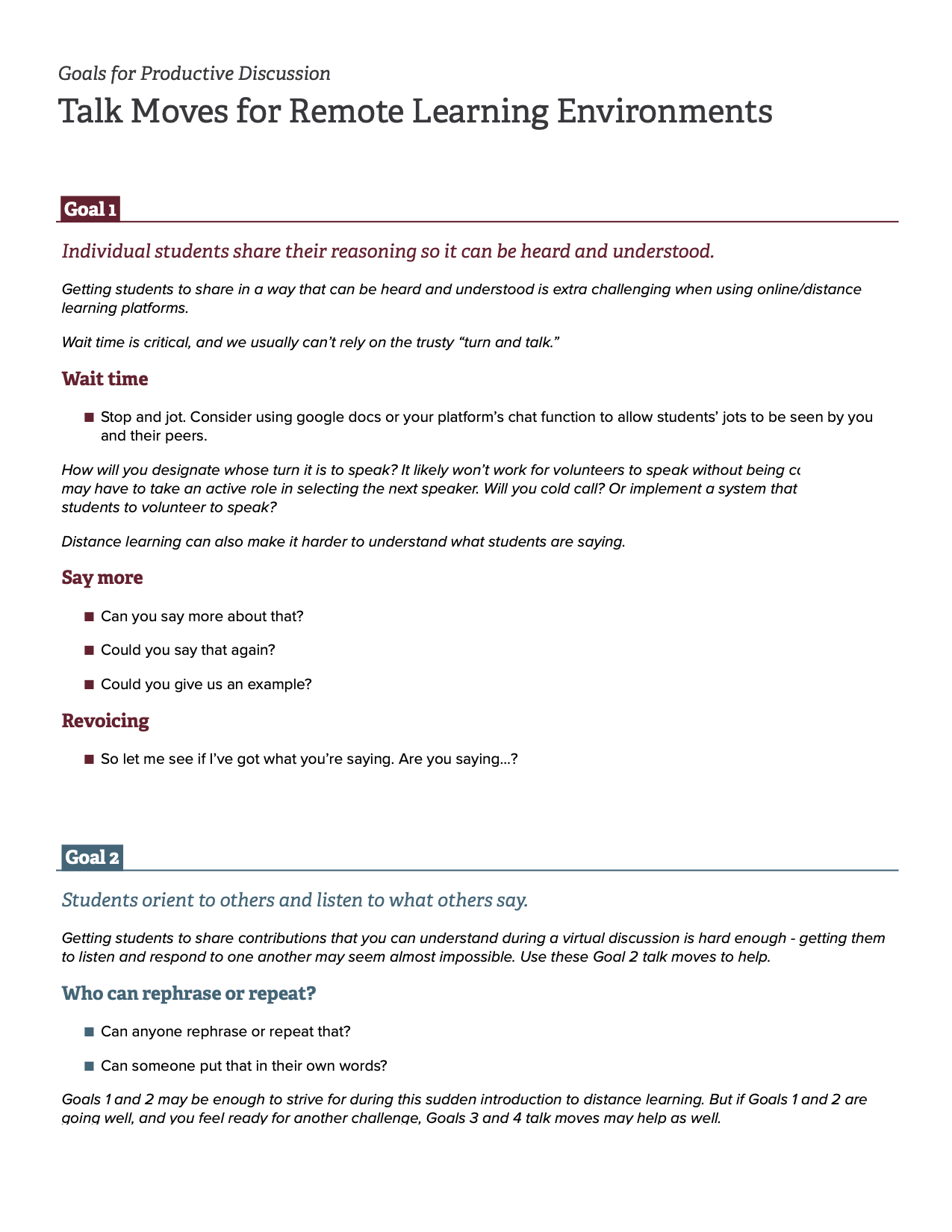WordGen Elementary Adaptations to Support Remote Learning
When making adaptations for virtual learning, it’s important to remember that WordGen is meant to be a discussion-based curriculum. In fact, our research shows that it is discussion that builds students’ argumentation, academic language, perspective taking, and comprehension skills. Therefore, we encourage you to create opportunities for students to engage in discussion and debate about unit topics. Perhaps students can connect independently with a partner or small group virtually via phone or computer. You might also lead an online whole class discussion during synchronous teaching time. The more students are able to discuss the content, the more engagement you can expect to see.
How to Access WordGen Elementary Google Docs:
Links to each unit are posted at serp.link.
In many cases, the link can be easily copied and pasted into an LMS, an email, or another mode of communication to share with your students.
The Google doc links are set to copy the document to your existing Google-hosted account. Students can complete the activities and share with their teacher for grading and feedback through your preferred LMS or communication system.
Because these are individual Google docs that can be edited, the page numbers do not match the original units and will shift as students’ move through the unit. Please keep this in mind when assigning or referring to specific activities.
Although these documents were created to make distance learning easier, they are not designed to be used without teacher direction or support. We recommend using the teacher’s edition to support your instruction when assigning student materials.
While most questions or prompts have space for students to type, there are some activities that would benefit from students knowing how to draw, add shapes, or highlight text. In some cases, you may suggest that students draw or write on scrap paper and upload a photo of their work.
Ideas for WordGen Elementary Adaptations for Remote Learning Environments, by component:
Sample approach to scheduling a WordGen Elemetary Unit for Remote Learning Environments:
Segment 1
(Asynchronous)
- Launch the unit with a question to engage students’ in the unit topic
- Watch Action News
- Respond to Action News T&T in writing or on a discussion board
Segment 2
(Synchronous)
- Debrief action news
- Do Reader’s Theater aloud and then in breakout room groups
- Debrief Reader’s Theater
Segment 3
(Asynchronous)
- Complete characters’ perspectives activity (with a partner, if possible)
- Complete word study (with a partner, if possible)
Segment 4
(Synchronous)
- Debrief characters’ perspectives, word study, vocab cards, word chants
- Preview and assign mid-unit activities (to complete in partners, if possible)
Segment 5
(Asynchronous)
- Complete mid unit activities, with a partner, if possible (Journals and Journeys, Science, Interview, Articles/ Informational Text, Math)
- Respond to prompts in writing or on a discussion board
Segment 6
(Synchronous)
- Debrief mid unit activities
- Set up prepare for debate activity
Segment 7
(Asynchronous/Synchronous)
- Complete prepare for debate activity (with partner or groups, if possible)
Segment 8
(Synchronous)
- Engage in debate
Segment 9
(Asynchronous)
- Complete writing
The following apps may be useful:
| Synchronous Discussion | For Pre-recorded / asynchronous Responses | For Written Responses | Asynchronous Debate |
|---|---|---|---|
| Zoom | Audio Boom | Google Docs | Flipgrid |
| Google Meet | Flipgrid | Kami | Kailo EDU |
| Microsoft Teams |
Resources for Leading Synchronous Discussions Online
Many educators have been thrust into online teaching for the first time, with minimal planning or preparation. We know you are navigating many obstacles as you try to do what is best for your students. For those who have the opportunity to convene your students synchronously for virtual discussions, you may be asking yourself: How do I pull this off?
These documents may be of help:
Development of Word Generation was led by Catherine Snow (Harvard University) and Suzanne Donovan (SERP). Major SERP contributors to program development include: Claire White, Alyse Krantz, Halley Wheeless, Matt Ellinger, David Dudley, and Patrick Hurley. Boston Public Schools and other districts in Massachusetts and Maryland collaborated with SERP to develop Word Generation.
Support for Word Generation was provided by the Carnegie Corporation of New York, the William and Flora Hewlett Foundation, the Noyce Foundation, the Spencer Foundation, the Leon Lowenstein Foundation and the Institute of Education Sciences, U.S. Department of Education through grant numbers R305A090555 and R305F100026. The information provided does not represent views of the funders.




